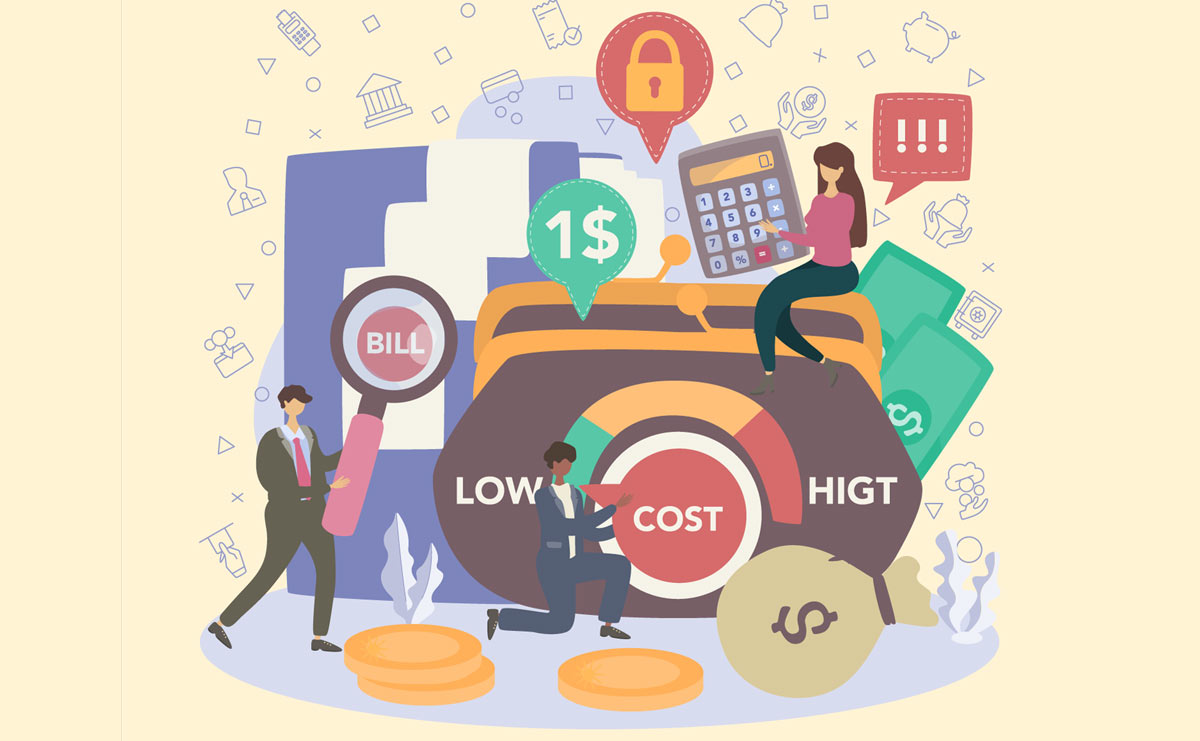Contents
Effective Strategies to Control and Reduce Law Firm Costs
Learning how to manage a law firm effectively requires a focus on key areas like cost control, staff efficiency, and the integration of technology to streamline operations and boost profitability. Controlling and reducing costs is a crucial aspect of running a successful law firm. With increasing operational expenses, from staffing to technology, law firms are constantly seeking ways to streamline their processes and enhance profitability without sacrificing the quality of service. Effective legal cost control is essential for law firms to maintain profitability while delivering quality services to their clients. In this guide, we will explore practical strategies for law firms to manage their budgets more effectively, identify areas of potential savings, and implement cost-control measures that can lead to long-term financial health. Firms can maintain a competitive edge while keeping their expenses in check by focusing on key areas such as technology, resource allocation, and operational efficiency.
What is Cost Control in Law Firms?
Cost control in law firms, a strategic management of expenses, is significantly enhanced by using technology. Controlling expenses is critical for law firms to stay profitable while maintaining high standards of client service. By controlling expenses, firms can invest in growth opportunities without overspending. This ensures the firm’s profitability and the delivery of high-quality legal services. By monitoring and regulating overhead, labor, and other operational expenses without compromising service quality, cost control brings about a proactive approach that includes regular financial reviews, budgeting, and technology to automate processes and reduce manual tasks.
One key area for cost control is overhead expenses, which can include rent, utilities, office supplies, and technology infrastructure. Effectively managing law firm overhead expenses is crucial for maintaining profitability and ensuring the long-term success of the practice. Law firms can reduce these costs by implementing remote work policies, outsourcing non-core functions such as IT support or marketing, and negotiating favorable contracts with vendors. In the end, by focusing on legal cost control, firms can streamline operations and reduce unnecessary overhead.
Labor costs are another significant area, encompassing salaries, benefits, and bonuses for attorneys, paralegals, and administrative staff. To manage these expenses, firms may consider flexible staffing arrangements, which involve adjusting the number of employees or their work hours based on the firm’s current needs. This could include hiring contract attorneys or part-time staff and investing in training to improve employee productivity.
In addition, leveraging technology, such as legal practice management software and document automation tools, can significantly reduce time spent on routine tasks like document drafting, case research, and client communication, allowing attorneys to focus on billable work. This not only increases efficiency but also helps in controlling labor costs.
Furthermore, the meticulous monitoring of key financial metrics, such as profitability per client and cost per case, serves as a reliable compass for a law firm’s cost control efforts. Regular financial reporting and analysis not only enable firms to identify areas where spending may be excessive but also provide a clear roadmap for necessary adjustments. This reassures that a balanced approach to cost control is not just a theory, but a practical and effective strategy for maintaining profitability without compromising client satisfaction or the quality of legal services provided.
Why Cost Control is Essential for Law Firm Growth
Legal cost control is essential for law firm growth because it ensures financial stability and profitability while enabling the firm to reinvest in critical areas such as technology, marketing, and talent. Here are a few key reasons why controlling costs is crucial:
Profitability and Sustainability: Effective cost management empowers law firms, giving them control over their financial destiny. By minimizing unnecessary expenses, firms can increase their profitability, ensuring they have the financial cushion to confidently navigate market fluctuations.
Reinvestment Opportunities: When costs are under control, law firms can allocate more resources to growth initiatives like expanding practice areas, investing in technology, or launching targeted marketing campaigns that attract new clients.
Competitive Pricing: By keeping overhead low, law firms can offer competitive pricing to clients, making their services more attractive without compromising quality. This is especially important in highly competitive markets.
Client Satisfaction: Efficient cost management often translates to streamlined operations, which can improve service delivery and reduce billing disputes. For instance, a law firm that invests in a more efficient case management system can provide faster, more accurate updates to clients, leading to higher satisfaction. Clients appreciate transparency in billing, and by controlling costs, firms can ensure more predictable, reasonable fees.
Scalability: For a law firm looking to expand, having a firm grip on costs ensures that growth is not just possible, but strategic and sustainable. This prevents the firm from overextending itself financially and allows for measured, forward-thinking scaling of operations.
Risk Management: Unchecked expenses can lead to financial strain, potentially putting the firm at risk of layoffs or service cutbacks. Cost control, however, provides a reassuring sense of long-term security for both the firm and its clients.

Cost Control vs. Cost Reduction: What Is the Difference?
Cost control and cost reduction are both key financial strategies for businesses, but they each have a different focus and approach.
Cost control is about keeping expenses within set limits or staying on budget without sacrificing the quality or performance of the business. It involves monitoring and managing spending to make sure it stays in line with what was planned. This approach helps maintain efficiency by preventing overspending, and it is typically a long-term strategy. Examples of cost control include setting department budgets, reviewing financial reports regularly to make sure spending aligns with forecasts, and implementing rules to avoid unnecessary purchases.
Cost reduction, on the other hand, is about actively cutting costs to increase profitability. This approach involves finding ways to reduce expenses without hurting the quality of products or services. It often means analyzing processes to identify and eliminate inefficiencies. Cost reduction usually has an immediate effect, though it can also be part of a long-term plan. Examples include negotiating better deals with suppliers, automating tasks to lower labor costs, or outsourcing certain activities.
Both strategies are important for keeping a business financially healthy, but the choice between them depends on specific goals and circumstances.
Top Cost Control Strategies for Small and Mid-Sized Law Firms
Keeping costs in check is crucial for small and mid-sized law firms to stay competitive and profitable. With the right strategies, firms can manage expenses without sacrificing the quality of their services. Controlling expenses is key to ensuring long-term sustainability and success for small and mid-sized law firms. Here are some top cost control strategies for small and mid-sized law firms:
Automate Administrative Tasks: Use legal practice management software like RunSensible to automate routine tasks like billing, document management, and client communication. This reduces administrative overhead and saves time.
Outsource Non-Core Functions: Outsource Non-Core Functions: Consider outsourcing non-essential tasks such as IT support, marketing, and bookkeeping. This reduces the need for full-time staff and associated benefits. Additionally, services like Deminor can assist firms in securing external funding for high-stakes cases, helping them preserve operational budgets.
Utilize Virtual Assistants: Hiring virtual assistants for administrative tasks like scheduling, client follow-ups, and document preparation can be more cost-effective than in-house staff.
Implement Remote Work Policies: Allowing remote work reduces the need for large office spaces, cutting rent and utility costs. When in-office work is necessary, you can opt for shared or co-working spaces.
Optimize Vendor Relationships: Negotiate with vendors for better supplies, technology, and service rates. Long-term contracts can secure discounts, reducing operational costs.
Reduce Paper Usage: Transitioning to a paperless office reduces printing, storage, and paper costs. Invest in digital document storage solutions to manage client files more efficiently.
Outsource Legal Research and Writing: Hire freelance legal researchers or contract attorneys on a project basis for tasks like case research and drafting motions, which reduces the need to hire full-time associates.
Leverage Technology for Legal Research: Use cost-effective online research tools and databases. Subscribing to affordable platforms can save significant time and money compared to traditional legal research methods.
Streamline Client Intake: Improve the client intake process with customizable online forms and CRM systems such as RunSensible. This will reduce time spent on manual data entry and follow-up, saving both time and money.
Offer Flat-Fee Services: Introduce flat-fee pricing for routine legal services to improve cash flow and eliminate administrative costs related to hourly billing disputes.
Review and Optimize Staffing Levels: Regularly review staffing needs to ensure you are adequately staffed. Evaluate whether part-time or contract workers could fill specific roles.
Maximize Office Efficiency: Optimize your office layout and workflows to reduce inefficiencies. Ensure that everyone is trained to use productivity tools effectively.
Monitor Cash Flow Closely: Review financial statements regularly to identify unnecessary expenses. Implement budgeting tools and strategies to control spending and improve profitability.
These strategies can help small and mid-sized law firms reduce overhead and improve profitability while maintaining high-quality legal services.
Common Pitfalls to Avoid in Law Firm Cost Control
Controlling costs is key for law firms, but there are common mistakes that can easily throw budgets off track. Avoiding these pitfalls can help firms stay on top of their finances and run more efficiently. Here are some common pitfalls to avoid in law firm cost control:
Lack of Clear Budgeting: Failing to set a detailed budget can result in overspending. Regularly review and adjust the budget to align with the firm’s goals and market changes.
Ignoring Fixed vs. Variable Costs: Not distinguishing between fixed and variable costs can prevent firms from making flexible, cost-saving decisions, mainly when client demand fluctuates.
Underutilizing Technology: Many firms need more time to invest in legal technology that can automate repetitive tasks. However, the upfront cost can yield significant long-term savings by reducing manual labor and improving efficiency.
Failure to Track Expenses: Small costs can accumulate unnoticed without proper tracking of daily expenses. Firms should regularly monitor expenses to stay within their financial targets.
Overstaffing or Understaffing: Staff mismanagement can lead to high payroll costs or reduced productivity. Hiring the right number of people and effectively utilizing outsourcing options is key to controlling costs.
Not Negotiating with Vendors: Failing to regularly renegotiate contracts with vendors can result in missed cost reductions or more favorable terms for supplies, software, or services.
Inefficient Billing Practices: With streamlined billing processes, firms can avoid revenue collection delays. Automating invoicing and recurring payments can reduce the burden of tracking payments and late fees.
Lack of Data-Driven Decision-Making: Many firms must leverage data analytics to identify where money is wasted. By tracking key metrics, law firms can make more informed decisions about where to cut costs.
Inadequate Use of Outsourcing: Not outsourcing non-core tasks, such as marketing, IT, or administrative work, can lead to higher in-house operational costs. Outsourcing can provide a more cost-effective solution.
Ignoring Client Feedback on Billing: Failing to gather client feedback on billing practices can result in client dissatisfaction and missed opportunities to refine your pricing strategy.
Avoiding these pitfalls requires strategic planning, technological investment, and continuous financial oversight.
Monitoring and Tracking Expenses: Tools for Effective Cost Control in Law Firms
Firms that prioritize controlling expenses can better manage their budgets while continuing to deliver top-notch legal services. When it comes to monitoring and tracking expenses for effective cost control in law firms, here are some highly efficient tools and strategies that can significantly enhance financial management:
Legal Practice Management Software: Comprehensive platforms like RunSensible offer a wide range of features, including expense tracking. These systems help categorize expenses, generate reports, and track costs associated with each client or case, providing a comprehensive solution for financial management.
Accounting Software: QuickBooks or Xero are popular for managing overall finances, including tracking operational expenses, invoicing, and payroll. Integration with legal-specific software ensures that law firms stay compliant with legal accounting regulations.
Expense Management Apps like Expensify or Zoho Expense are designed for convenience. They simplify the expense reporting process, allowing employees to scan receipts, log expenses, and get approvals on the go. These tools can also automatically sync with accounting software, making them a user-friendly choice for law firms.
Budgeting Tools, such as Float or Budget Maestro, play a crucial role in maintaining financial control. These tools help law firms project future expenses and align their actual spending with their budget. They can also generate forecasting reports, which are instrumental in preventing overspending.
Billing and Time Tracking Software: Software like RunSensible includes tools to monitor billable hours and related expenses. These platforms provide a holistic view of profitability and efficiency by linking time spent to project expenses.
Cloud-Based File Management: Tools like Google Drive, Dropbox, or SharePoint reduce the need for physical storage costs by keeping files in the cloud, making them easily accessible while cutting down on office-related expenses.
CRM Systems: Client relationship management
Law Firm Cost Control with RunSensible
RunSensible provides law firms with comprehensive tools to control costs and streamline operations. Its expense tracking feature allows firms to monitor expenditures related to individual cases and overall operations, helping identify areas for cost reduction. With automated billing and invoicing, RunSensible minimizes administrative errors and ensures timely payments, while its integration with accounting tools like QuickBooks allows for seamless financial management. The platform’s CRM functionality centralizes client management, reducing the need for multiple software tools and improving workflow efficiency. Document automation and standardized templates help law firms save time and reduce administrative costs.
RunSensible’s staff management tools also optimize task delegation, ensuring efficient resource use and minimizing labor costs. With built-in data analytics, law firms can generate reports to identify high-expenditure areas, enabling proactive cost control. By leveraging these features, law firms can enhance financial planning and profitability.
Final Thoughts
The key to how to manage a law firm efficiently is ensuring that every aspect, from case management to billing, is well-organized, allowing the firm to meet client expectations while maintaining a strong financial foundation. Controlling expenses is crucial for law firms to stay profitable while maintaining high standards of client service. By managing expenses like overhead, staffing, and technology more effectively, firms can boost their profitability without sacrificing the quality of their services. Tools like RunSensible make it easier to track spending, streamline processes, and identify areas for savings, helping firms focus on growth and client satisfaction. Ultimately, smart cost control allows law firms to run more efficiently, ensuring they remain successful in a challenging market while delivering great results for their clients.
Disclaimer: The content provided on this blog is for informational purposes only and does not constitute legal, financial, or professional advice.







